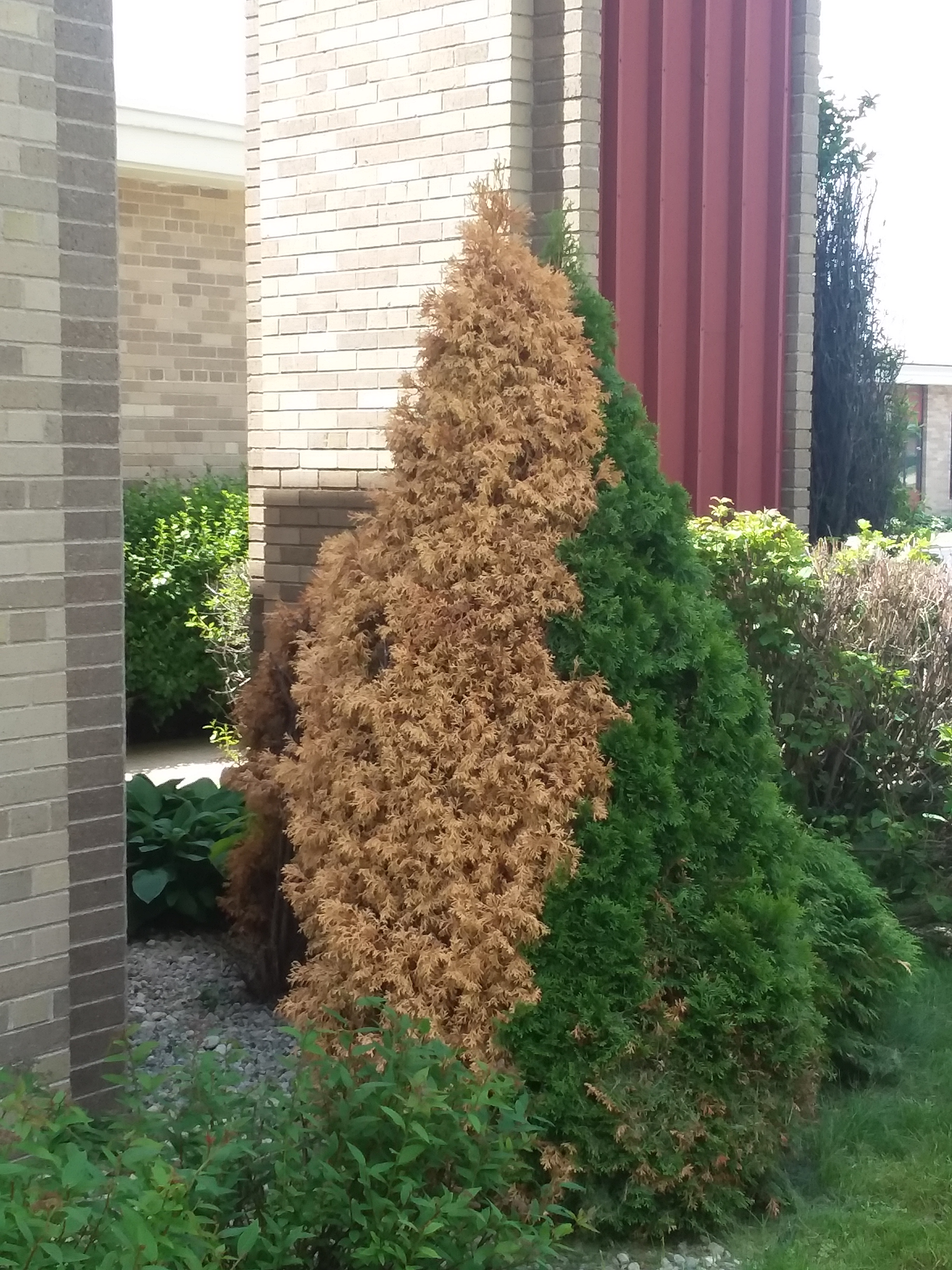Extreme springtime conditions cause stress to many conifer shrubs in Upper Peninsula and northern Wisconsin
Use Smart Gardening tips for current management and future prevention of water stress in conifer shrubs.

Commonly chosen for their evergreen characteristic, junipers and arborvitae (cedar) are a backbone in many Upper Peninsula and northern Wisconsin home and commercial landscapes. Their ability to withstand harsh winter conditions makes them a smart choice for many sites. Junipers are also known for their resilience to dry conditions. Yet this past spring’s unusual weather along with limited snowfall has had negative consequences for these conifers. Many of them have significant portions with reddish-brown needles and some are entirely reddish-brown, appearing dead.
What caused this?
Weather plays a role. Upper Peninsula and far northern Wisconsin temperatures in May were well above normal, and a quick warm up occurred. At this time, there was also a lack of natural rainfall. Water reserves within the ground were depleted, and these conifers were stressed. Add to this the location of the shrub and whether or not they had even more water stress—for example, if the shrub is located underneath a building eave where no rainfall likely falls, or a reduced or limited snowfall, which would insulate the plant and reduce water loss during the winter.

An example of the added stress that location caused with this past spring’s conditions. The plant tissues closer to the building heated up from the radiating heat and required even more water. This arborvitae is beneath an eave, so received even less rain.
Can they be saved?
First, check to see if any of the affected branches are still living. You can test this by bending the browned branches and seeing if they snap. Dead tissue will break easily. Carefully scrape away the outer bark with your fingernail or a pocket knife to see if there is any green tissue beneath. The green tissue will be the cambium layer, which is essential for water and nutrient movement. If this tissue isn’t green, the branch is dead and needs to be trimmed out.
If there are still signs of living tissue and they haven’t received sufficient water, thoroughly water shrubs at the base. If a significant percentage of the plant is still alive, it may be worth keeping. Continue to check the shrubs for needed water and observe the affected shrubs for any additional death or possible new growth.
Can this be prevented in the future?
One smart practice to avoid this in the future is to always make sure shrubs are well watered before the ground freezes for the winter. Adding a 6-inch layer of an organic mulch, such as shredded leaves or bark, around the perimeter of the shrub will reduce water loss from the soil surface, create a more uniform soil temperature and therefore create a less stressful environment. Do not place mulch up against the trunk, as air needs to circulate for this living tissue.
Continue to evaluate the shrub’s need for water, i.e., is it getting enough water where it’s located? How might the current environmental conditions affect it?
For more information on a wide variety of Smart Gardening topics, visit the Gardening in Michigan website or contact MSU Extension’s Lawn and Garden hotline at 1-888-678-3464.



 Print
Print Email
Email